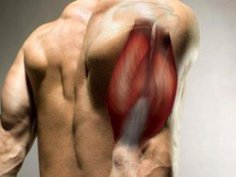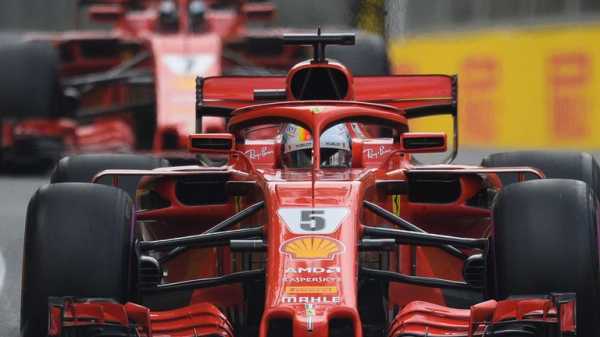
Four races in and we might just be beginning to get enough data to make sense of the competitive picture at the front of F1.
The stopwatch never lies – and it says that the fastest qualifying car has once been Mercedes and three times Ferrari – but what it cannot do is reveal how those times are being derived, especially when it involves the black art of tyre temperature management.
But now that we have seen four races, with five different tyre compounds in track conditions ranging from downright cold to sweltering hot and everything in between, we have seen fast corner performance and slow, sectors that demand heavy braking and others that reward high-momentum.
It is enough to begin to discern a pattern between the top three cars of Ferrari, Mercedes and Red Bull.
One very obvious distinction to be made is that Mercedes, unlike in previous seasons in the hybrid era, no longer have a Q3 engine mode advantage over Ferrari to skew the picture.
They each still have an engine mode advantage over the Renault in the back of the Red Bull, but relative to each other they now stack up much the same in normal or Q3 mode.
We saw quite a neat illustration of this in Q2 and Q3 in the cool of Shanghai when both teams had opted to do Q2 on the softs rather than the ultrasofts. After the first Q2 runs the Ferraris were around 0.5s clear of the Mercedes, which could not turn the tyre on. To such an extent, that it all looked a bit marginal whether they might get bumped out.
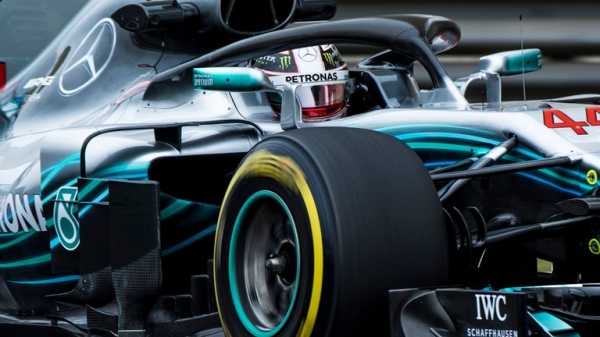
So the Mercs went back out for second runs, this time with the full engine mode normally reserved for Q3 – as was confirmed by the significant jump in speed trap readings. This brought them lap times pretty much directly comparable to those Ferrari had recorded on the first runs. Maybe the track had improved slightly – but by no more than a 0.1s or so, judging by everyone else’s second Q2 runs – so the inference was the Merc Q3 mode (used on the second Q2 runs) was worth in the region of 0.4s.
We then saw in Q3 Ferrari switch on its own Q3 mode – and suddenly their half-second advantage over Mercedes re-appeared, maybe even extended slightly. Vettel’s pole lap was 0.6s faster than anything Mercedes could do.
So Shanghai gave us a good reading on engine mode comparison, but not necessarily a true reading on overall car performance.
On a track temperature of just 19 degrees Celsius, the tyres on the Merc were just not reaching the critical temperature threshold on Saturday. When the track was in the early-mid 20s on Friday and Sunday, the Merc tyres were much nearer that threshold (though still hovering in and out of it with Hamilton on Sunday) and in those conditions, it appeared as if the Ferrari was no more than 0.1s quicker.
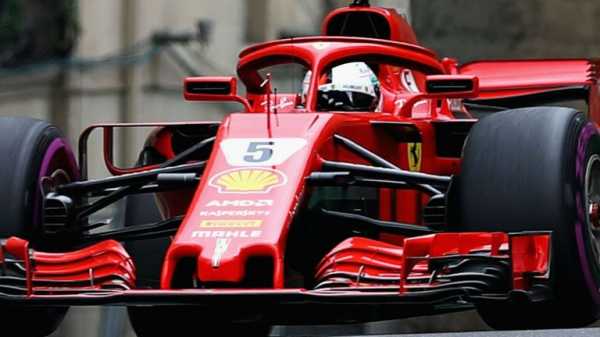
As a generality in Melbourne, Bahrain and Shanghai the Ferrari was quicker at the end of the straights but the Merc was making its time through a slightly higher wing setting. It levelled out with just a small difference.
But Melbourne was the anomaly.
There, Hamilton set pole by 0.65s over Raikkonen’s Ferrari. Vettel was struggling to find the balance of the SF71-H and Albert Park is a track where Hamilton has historically always been able to find big chunks of lap time. As a combination, those two things seem to have skewed the picture.
Everything since suggests the Ferrari is simply a slightly faster car.
Yes, the Mercedes has been struggling with tyre temperatures (in Bahrain qualifying it was overheating the surface, in Shanghai under-heating the whole tyre) and the Ferrari has not. But that in itself can often be a function of a car with less downforce, not putting as much energy into the tyres.
So in this scenario, yes the tyres exaggerate the deficit to Ferrari. But only because there is a downforce deficit there in the first place – this despite the Merc often using more wing angle to induce tyre heat. The Ferrari performance simply looks more robust.
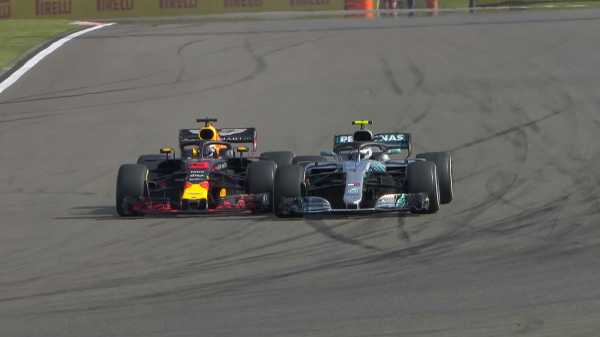
Daniel Ricciardo demonstrates his overtaking ability as he passes Lewis Hamilton, Sebastian Vettel and Valtteri Bottas at the Chinese GP
What of Red Bull’s RB14? It won in Shanghai mainly because a Safety Car allowed it to be on a much faster tyre than the Merc or Ferrari and bunched the field up, allowing those ahead of Ricciardo to be within his reach.
But when it was working well, it was capable of stunning lap times. Both engineers and drivers at Mercedes doubted very much they could have done Ricciardo’s late-race times even if they’d had the same tyres.
Could Ferrari? We had seen a brief glimpse of Red Bull’s speed in the early laps of Bahrain before they broke down. Ricciardo had easily had the legs of Raikkonen and was just trying to work out which corner to pick for the pass when his car stopped, while Verstappen was able to put his Turn One move on Hamilton by being much quicker through the final corner.
The late laps in Shanghai just confirmed that in certain situations the RB14 may just be the quickest car of all – as did Friday in Baku when as a generality Ricciardo was the class of the field.
But it is always going to be difficult to convert this into victory when the Q3 mode disadvantage leaves you starting on row three, two at best.
The Baku track’s unique layout (Monaco-style middle sector but with a 2km straight at the end of the lap) saw different wing choices being made and this had a fundamental effect on tyre behaviour.
Both Ferrari and Mercedes opted to use compromise spoon-shaped rear wings (ie trimmed out at the outer edges, but with plenty of profile in the more efficient middle part) but Ferrari ran theirs with significantly more angle (meaning, unusually, they were the slowest of the big three through the speed traps, around 9kph down on Red Bull during qualifying).
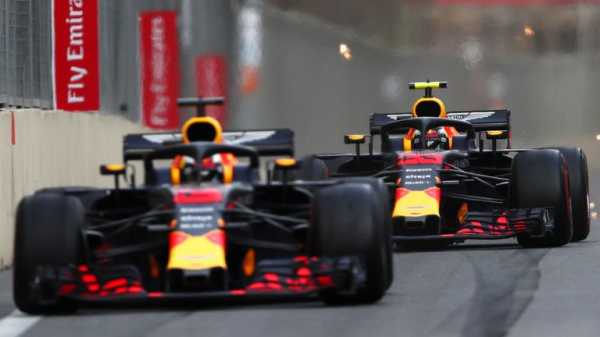
Red Bull ran a conventional profile, but ran it almost flat, giving relatively little downforce and relying on the car’s exceptional underbody performance to get an adequate total level. But in the cool of race day Baku, it was not enough to allow them to get the harder supers switched on. Merc were struggling with this too – but less so. Ferrari were not struggling with it at all.
Again, it all suggests that the Ferrari has the best combination of downforce and power, allowing them a much bigger window in which to get the tyres working properly. The Red Bull, being down on power, can only do competitive lap times by running a high rake car to generate lots of underbody performance, but as soon as they trim out the wing, it falls below Ferrari’s level of total downforce.
In summary: the Ferrari looks intrinsically overall the fastest car as things stand. The Mercedes is only sometimes close to it and the Red Bull, in certain conditions, can be faster than either – but is also more sensitive than either in a combination of cool track and skinny wings. And that is rooted in its power deficit. The good news for Red Bull is that we are unlikely to see such a combination too often – and that its mechanical traits at low speed probably make it favourite to be the fastest car at Monaco.
Sky Sports F1 is the only place to watch every Formula 1 Grand Prix, qualifying and practice session live in 2018. Get Sky Sports F1.
Comment below to get involved in the debate, but please adhere to our House Rules. If you wish to report any comment, simply click on the down arrow next to the offending comment and click ‘Report’.
Also See:
Sourse: skysports.com


